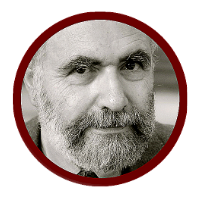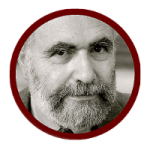The first question one must ask is why the government did not consider imposing some measure of martial lawA curfew was set up yesterday at Le Raincy, a neighborhood in the eastern suburbs of Paris. The order was issued by the local conservative mayor, Eric Raoult. The prime minister, Dominique de Villepin, made clear on television that similar measures might soon be enforced on a broader scale. "Restoring public safety is our top priority," he said. After 11 days and nights of rioting, the country was coming close to a civil war.
A map published in the afternoon by Le Monde showed that ethnic violence – the "French Intifada," as it is being referred to by some journalists and political leaders – had spread almost all over the country, with the exception of Inner Brittany, western Normandy, and Burgundy, where North African and black communities are small, and Corsica, where a large North African community is held in check by a local nationalist movement that itself is prone to violence. Most major cities, including Lyons, Marseille, Lille, Toulouse, and Bordeaux, have been hit.
Rioting and guerrilla-style street fighting were still rampant in the northern Parisian county of Seine-Saint-Denis – colloquially known as 9-3, after its postal code – where the whole thing started on October 27. The five other Parisian counties were hurt as well. The inner city itself, the ultra-chic City of Paris, was subjected to several ethnic raids over the weekend.
In terms of destruction and casualties, the balance sheet is horrendous. Between Sunday and Monday night, no fewer than 1,408 cars, including buses and trucks, were torched throughout the country. Schools, colleges, sports facilities, factories, shopping arcades, and even two churches – one in Lens, in the north, and one in Sete, on the Mediterranean – were burned. A local resident who attempted to stop a fire was beaten to death in Stains. Elsewhere, a disabled woman narrowly escaped being burned alive in a torched bus. Dozens of firefighters were wounded.
The first question one must ask is why the French government, admittedly one of the strongest and most centralized in the world, and certainly in Europe, did not consider imposing some measure of martial law in the violence-ridden areas much earlier.
There are many constitutional and legal provisions that would have allowed such steps. According to Article 16 of the 1958 constitution, the French president can resort to "exceptional powers" in case of a "major crisis": All he has to do is to consult with the prime minister, the chairpersons of both houses of Parliament, and the president of the Constitutional Council, who all four happen to be loyal followers.
According to Article 36, martial law can be decreed for a period of 12 days, and then confirmed by Parliament for extended 12-day periods, if necessary. The present Parliament is conservative-dominated. As for regular curfews, they can be decreed by the Cabinet without further review under a 1955 law. Moreover, it is an open secret that the for about 15 years French defense forces had made at least contingency plans for "urban battles" similar to what is happening now.
One reason for the government's procrastination has been that in a crisis scenario, much depends on the president, Jacques Chirac, and he suffered a minor stroke several weeks ago. Another reason is that both Mr. Chirac and his heir apparent, Mr. Villepin, were not entirely unhappy about the rioting, at least in its first stage, since it was a blow to their political rival within the conservative camp, the minister of the interior, Nicolas Sarkozy.
The temptation to sack Mr. Sarkozy – as a token of appeasement – may have loomed over them for several days at least. Moreover, Messrs. Chirac and Villepin have built their political identity on a Gaullist pro-Arab and pro-Islamic stand that became fully apparent three years ago, when France distanced itself from America in respect of Iraq. They may expect to harvest a large "immigrant vote" in the coming presidential and parliamentary elections, in 2007, and be reluctant to jeopardize it by taking an aggressive law and order line now.
Still, more factors may have played as well. The government may have been genuinely surprised and intimidated. It is one thing to know in theory that France has undergone major ethnic changes over the past 30 years and another thing altogether to confront a mass ethnic insurgency. The figures are inescapable. There are about 60 million inhabitants in continental France, plus 2 million citizens in the overseas territories (essentially the French West Indies and La Reunion island in the Indian Ocean). About 20 million, most of them white and Christian, are over 50.
Out of the remaining 40 million or so, 10 million or so belong to the ethnic minorities: Muslim North Africans, Muslim Turks or Near Easterners, Muslim Black Africans, Christian West Indian, African or Reunionese blacks. When one regards to the youngest age brackets, the proportion is even larger. It is estimated that 35% of all French inhabitants under 20, and 50% of all inhabitants in the major urban centers, belong to the ethnic minorities. Islam alone may claim respectively 30% and 45%. Since war is essentially the business of youths, the combatant ratio in any ethnic war may thus be one to one.
Which brings us to a second question: How ethnic is the present violence in France? Liberal commentators, both in France and abroad, tend to say that poverty and unemployment, rather than race or religion, are the driving force behind the riots. Mr. Villepin himself tends to share this view, at least in part. He said yesterday on TV that he is earmarking enormous credits for housing rehabilitation, education, and state-supported jobs in the areas where the unrest has developed. But the fact remains that only ethnic youths are rioting, that most of them explicitly pledge allegiance to Islam and such Muslim heroes as Osama bin Laden, that the Islamic motto – Allahu Akbar – is usually their war cry, and that they submit only to archconservative or radical imams.
The fact also remains, according to many witnesses, that the rioters torch only "white" cars, meaning white owned cars, and spare "Islamic" or "black" ones. One way to discriminate between them is to look for ethnic signs like a sticker with Koranic verses or a picture of the Kaaba in Mekka or a stylized map of Africa. Further evidence of the animating influence in the riots lies with the French rap music to which the perpetrators listen. Such music obsessively describes White France as a sexual prey.
A third and last question is what impact this unprecedented ordeal is likely to have on France and Europe? One would reasonably expect the French government to restore its grip over the country. What matters, however, is the long-term outcome. My guess is that the crisis will not be so easily forgotten or washed away among the "non-ethnic" citizens, including those of alien stock who have fully integrated into the French society as it is. Rejection of Islam and of North African, Black African, and Middle Eastern immigration may increase dramatically. And the prospect of Turkey acceding to the European Union may get even dimmer.
Mr. Gurfinkiel is the editor of Valeurs Actuelles, a Paris-based journal.
Special to The New York Sun
© Michel Gurfinkiel and The New York Sun, 2005.
http://www.nysun.com/article/22671


